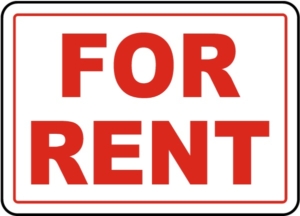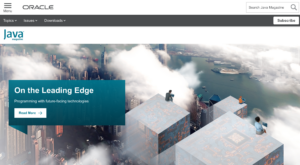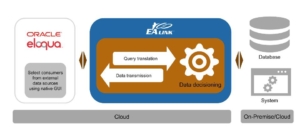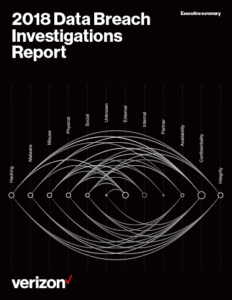 The public cloud is part of your network. But it’s also not part of your network. That can make security tricky, and sometimes become a nightmare.
The public cloud is part of your network. But it’s also not part of your network. That can make security tricky, and sometimes become a nightmare.
The cloud represents resources that your business rents. Computational resources, like CPU and memory; infrastructure resources, like Internet bandwidth and Internal networks; storage resources; and management platforms, like the tools needed to provision and configure services.
Whether it’s Amazon Web Services, Microsoft Azure or Google Cloud Platform, it’s like an empty apartment that you rent for a year or maybe a few months. You start out with empty space, put in there whatever you want and use it however you want. Is such a short-term rental apartment your home? That’s a big question, especially when it comes to security. By the way, let’s focus on platform-as-a-service (PaaS) and infrastructure-as-a-service (IaaS), where your business has a great deal of control over how the resource is used — like an empty rental apartment.
We are not talking about software-as-a-service (SaaS), like Office 365 or Salesforce.com. That’s where you show up, pay your bill and use the resources as configured. That’s more like a hotel room: you sleep there, but you can’t change the furniture. Security is almost entirely the responsibility of the hotel; your security responsibility is to ensure that you don’t lose your key, and to refuse to open the door for strangers. The SaaS equivalent: Protect your user accounts and passwords, and ensure users only have the least necessary access privileges.
Why PaaS/IaaS are part of your network
As Peter Parker knows, Spider Man’s great powers require great responsibility. That’s true in the enterprise data center — and it’s true in PaaS/IaaS networks. The customer is responsible for provisioning servers, storage and virtual machines. Not only that, but the customer also is responsible for creating connections between the cloud service and other resources, such as an enterprise data center — in a hybrid cloud architecture — and other cloud providers — in a multi-cloud architecture.
The cloud provider sets terms for use of the PaaS/IaaS, and allows inbound and outbound connections. There are service level guarantees for availability of the cloud, and of servers that the cloud provider owns. Otherwise, everything is on the enterprise. Think of the PaaS/IaaS cloud as being a remote data center that the enterprise rents, but where you can’t physically visit and see your rented servers and infrastructure.
Why PaaS/IaaS are not part of your network
In short, except for the few areas that the cloud provider handles — availability, cabling, power supplies, connections to carrier networks, physical security — you own it. That means installing patches and fixes. That means instrumenting servers and virtual machines. That means protecting them with software-based firewalls. That means doing backups, whether using the cloud provider’s value-added services or someone else. That means anti-malware.
That’s not to minimize the benefits the cloud provider offers you. Power and cooling are a big deal. So are racks and cabling. So is that physical security, and having 24×7 on-site staffing in the event of hardware failures. Also, there’s click-of-a-button ability to provision and spool up new servers to handle demand, and then shut them back again when not needed. Cloud providers can also provide firewall services, communications encryption, and of course, consulting on security.
The word elastic is often used for cloud services. That’s what makes the cloud much more agile than an on-premise data center, or renting an equipment cage in a colocation center. It’s like renting an apartment where if you need a couple extra bedrooms for a few months, you can upsize.
For many businesses, that’s huge. Read more about how great cloud power requires great responsibility in my essay for SecurityNow, “Public Cloud, Part of the Network or Not, Remains a Security Concern.”














 Can you name that Top 40 pop song in 10 seconds? Sure, that sounds easy. Can you name that pop song—even if it’s played slightly out of tune? Uh oh, that’s a lot harder. However, if you can guess 10 in a row, you might share in a cash prize.
Can you name that Top 40 pop song in 10 seconds? Sure, that sounds easy. Can you name that pop song—even if it’s played slightly out of tune? Uh oh, that’s a lot harder. However, if you can guess 10 in a row, you might share in a cash prize. Every new graduate from
Every new graduate from  Oracle Database is the world’s most popular enterprise database. This year’s addition of autonomous operating capabilities to the cloud version of Oracle Database is one of the most important advances in the database’s history. What does it mean for a database to be “autonomous?” Let’s look under the covers of
Oracle Database is the world’s most popular enterprise database. This year’s addition of autonomous operating capabilities to the cloud version of Oracle Database is one of the most important advances in the database’s history. What does it mean for a database to be “autonomous?” Let’s look under the covers of  Knowledge is power—and knowledge with the right context at the right moment is the most powerful of all. Emerging technologies will leverage the power of context to help people become more efficient, and one of the first to do so is a new generation of business-oriented digital assistants.
Knowledge is power—and knowledge with the right context at the right moment is the most powerful of all. Emerging technologies will leverage the power of context to help people become more efficient, and one of the first to do so is a new generation of business-oriented digital assistants. At too many government agencies and companies, the security mindset, even though it’s never spoken, is that “We’re not a prime target, our data isn’t super-sensitive.” Wrong. The reality is that every piece of personal data adds to the picture that potential criminals or state-sponsored actors are painting of individuals.
At too many government agencies and companies, the security mindset, even though it’s never spoken, is that “We’re not a prime target, our data isn’t super-sensitive.” Wrong. The reality is that every piece of personal data adds to the picture that potential criminals or state-sponsored actors are painting of individuals. Blockchain and the cloud go together like organic macaroni and cheese. What’s the connection? Choosy shoppers would like to know that their organic food is tracked from farm to shelf, to make sure they’re getting what’s promised on the label. Blockchain provides an immutable ledger perfect for tracking cheese, for example, as it goes from dairy to cheesemaker to distributor to grocer.
Blockchain and the cloud go together like organic macaroni and cheese. What’s the connection? Choosy shoppers would like to know that their organic food is tracked from farm to shelf, to make sure they’re getting what’s promised on the label. Blockchain provides an immutable ledger perfect for tracking cheese, for example, as it goes from dairy to cheesemaker to distributor to grocer. If you saw the 2013 Sandra Bullock-George Clooney science-fiction movie Gravity, then you know about the silent but deadly damage that even a small object can do if it hits something like the Hubble telescope, a satellite, or even the International Space Station as it hurtles through space. If you didn’t see Gravity, a non-spoiler, one-word summary would be “disaster.” Given the thousands of satellites and pieces of man-made debris circling our planet, plus new, emerging threats from potentially hostile satellites, you don’t need to be a rocket scientist to know that it’s important to keep track of what’s around you up there.
If you saw the 2013 Sandra Bullock-George Clooney science-fiction movie Gravity, then you know about the silent but deadly damage that even a small object can do if it hits something like the Hubble telescope, a satellite, or even the International Space Station as it hurtles through space. If you didn’t see Gravity, a non-spoiler, one-word summary would be “disaster.” Given the thousands of satellites and pieces of man-made debris circling our planet, plus new, emerging threats from potentially hostile satellites, you don’t need to be a rocket scientist to know that it’s important to keep track of what’s around you up there.



 Chapter One: Christine Hall
Chapter One: Christine Hall




